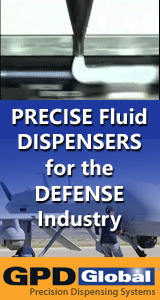We do not have experience soldering to the PVD surface you plan to use.
We use Titanium [Ti] stiffeners in wave soldering and our wave equipment manufacturer uses Ti fingers, nozzles, pump blades, and other parts, because solder doesn�t stick to Ti.
Ti is incredibly light. It has the best strength to weight ratio of any metal. The downside [or the upside, depending on your perspective] is that it is extremely reactive. This reactive property creates a thin film of oxide that seals the material from further corrosion or reaction with chemicals.
Routine welding or soldering are not a practical option. The problem arises when applying heat. It is impossible to solder Ti outside of a vacuum, as it rapidly oxidizes when extreme heat is applied. Titanium's great affinity for atmospheric gases (oxygen, nitrogen and hydrogen) rules out all welding or soldering processes where molten metal could come into contact with these elements. Argon with a degree of purity of 99.99 % should be used as protective gas. If a vacuum or inert gas atmosphere is not used, for soft-solder for instance, fluxes are needed to dissolve the oxide layer and prevent further gas pickup.
Welding requires an oxide free surface, and it�s the oxide that gives Ti its color and hard surface. Normally, government contractors chemically remove any oxide with hydrofluoric and nitric acid, and weld in a gas-shielded environment, using argon gas. Therefore, oxyacetylene welding is not possible. Primary fusion [ie, TIG, MIG, etc] welding processes must be carried out in an inert gas atmosphere.
reply »
![]() Hi.
Is there anyone with experience in soldering standard...
- Dec 09, 2003
by
Hi.
Is there anyone with experience in soldering standard...
- Dec 09, 2003
by
![]()
![]() We do not have experience soldering to the PVD surface you p...
- Dec 10, 2003
by
davef
We do not have experience soldering to the PVD surface you p...
- Dec 10, 2003
by
davef
![]()







